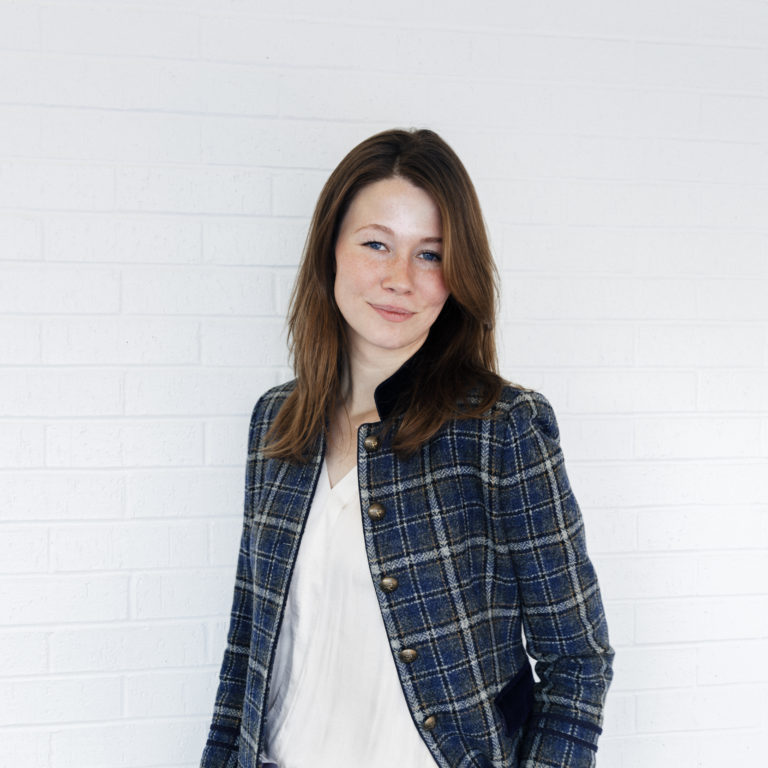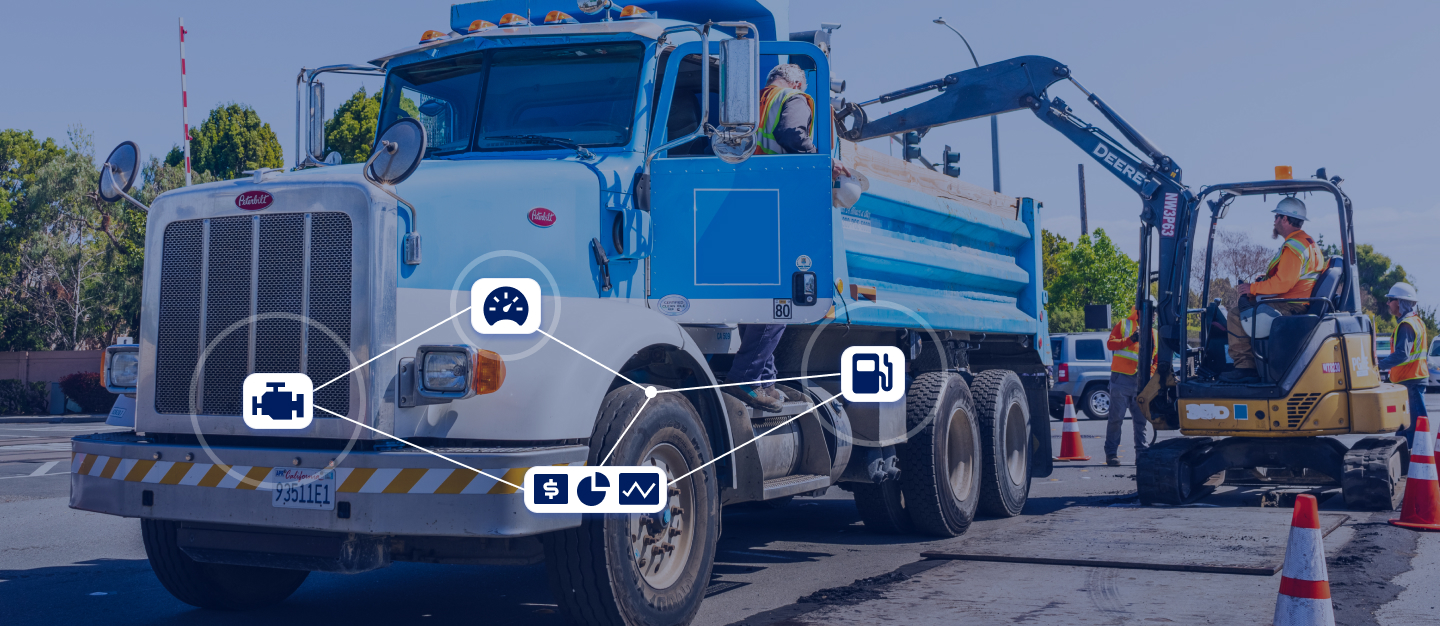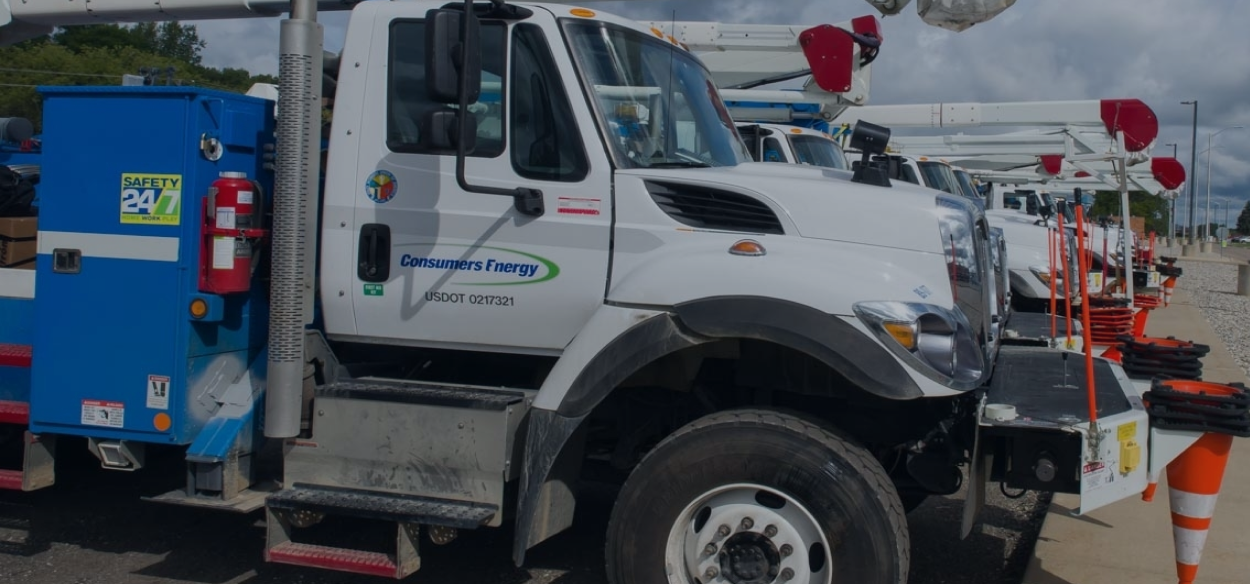
THIS is What is on the Mind of Product Managers Today
This week on Fleet FYIs, I’m speaking again with Lanelle Duke about product management and what the evolution of a product looks like. From the days of ‘software on a shelf’ to the new, streamlined automatic updates of today – we’re covering what’s on the minds of project managers today.
Here’s a quick summary of my conversation with Lanelle:
Have you ever wondered what’s on the minds of product managers today? It’s quite simple really. All product managers want to be responsible for a high-quality product – whether it’s software or otherwise. Here are a few of the main points from Lanelle and I’s conversation today:
- Software – and the process of creating it – has changed for the better.
- What the process of creating a software product is like,
- Why you should ALWAYS go through multiple rounds of testing,
and - Why customer feedback is ESSENTIAL to creating a new product for your offerings.
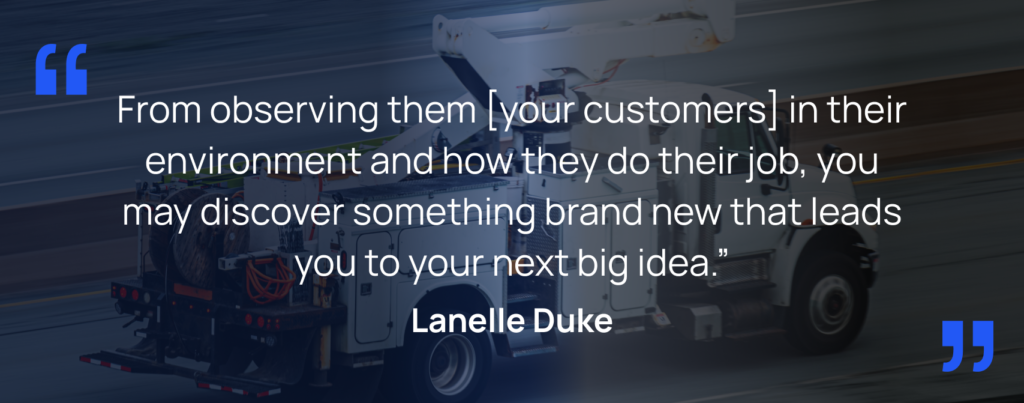
Lanelle’s most memorable quotes:
“What I’ve seen is the data is now the product. And that’s something that maybe in the past, that’s not how it was, it was the device that was the product, but now it’s the data. That’s the thing that you can create insights with. That’s the thing you can monetize.”
“From observing them [your customers] in their environment and how they do their job, you may discover something brand new that leads you to your next big idea.”
Lanelle Duke, The Journey of a Product From Start to Finish: Inside the Mind of a Product Manager with Lanelle Duke | Utilimarc Fleet FYIs Podcast
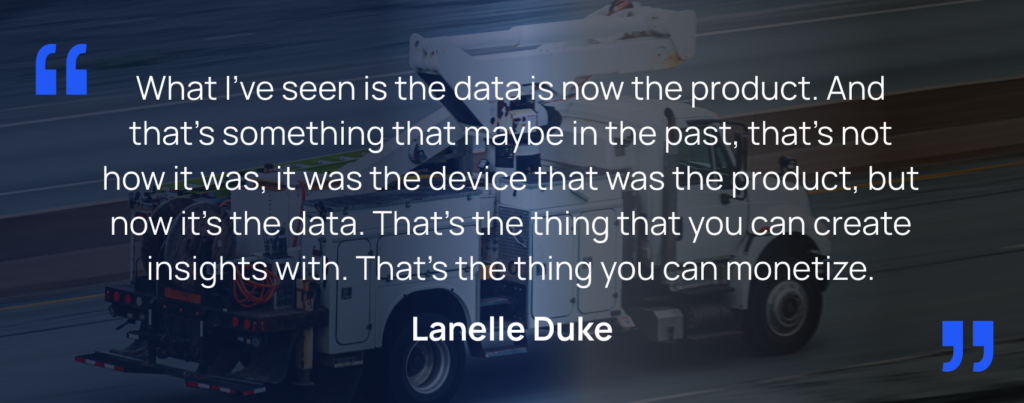
Episode seven was full of interesting insights. If you’d like to have a listen, it’s available to stream on all major platforms – but if reading is more your style, take a look at this episode’s transcript below:
The Journey of a Product From Start to Finish: Inside the Mind of a Product Manager with Lanelle Duke | Fleet FYIs: Episode 7
Gretchen Reese (00:04):
Hey there. Gretchen here. Welcome to Fleet FYIs, the weekly podcast by Utilimarc that makes fleet management strategy smarter, by bringing to you nearly two decades worth of data insights, industry hot topics and expert analysts together in conversation. Our aim is to help you better understand your data and your key metrics by hosting candid conversations with some of the industries finest. But before we begin, if this is your first time listening to our podcast, thanks for hitting the play button. I’m so glad you decided to come along for the ride and have a listen. Once you’ve finished today’s episode, if you could take a few minutes to leave us a review, we’d really appreciate it. Give us a rating, tell us what you liked or perhaps what you didn’t, or you can leave us a comment or a question about what we’ve covered today. Also, if you have a topic that you’d love for us to cover but we haven’t touched on yet, let us know. We’d be happy to go over it in detail in a later episode. Sound good? All right, let’s get back to the show.
Gretchen Reese (01:06):
Hey there. Welcome back to another episode of Fleet FYIs. As you all know, it was Thanksgiving in the U.S. last week, which hopefully meant good food and even at virtual good company for all of you. And now, even though it’s really hard to believe it’s already the first week of December, and it’s the start of my favorite time of the year. Not just because of the holiday sweets and treats and baking. Okay, maybe a little bit, but to segue into our topic for today, I think, and I’m sure I’m not alone here, that experiences solidify the way we feel about and interact with different things in our lives. Whether it be the holidays or something in our more professional lives. Take a product for example, a good company can be made even better with a good product, especially if it evolves and adapts to suit the changing needs of the company’s client base, as they grow and mature.
Gretchen Reese (01:54):
That leads me into what we’ll be chatting about in this episode, which is the evolution of a product and product design. Can it make or break a company, solidify customer loyalty? Utilimarc product manager Lanelle Duke is back again to chat about all things product. From the importance of design and user experience to really focusing on testing before you launch. For those of you that don’t know her or haven’t yet listened to previous episodes of Fleet FYIs, where she touches on the trends to expect in data and fleet for 2021 and machine learning, Lanelle has had an extensive background in product management for nearly a decade. Over the last four years, she took a deep dive into data and analytics and recently joined the Utilimarc team. But without further ado, I think we should get started.
Gretchen Reese (02:40):
Hey Lanelle, welcome back to the podcast. I’m happy you were able to be back for another episode.
Lanelle Duke (02:46):
Yeah, it’s nice to be invited back. I’m glad to be here.
Gretchen Reese (02:49):
So today, since we spoke about this a little bit in the last episode that we had you on, obviously you’re a product manager and you’ve had a lot of experience there. And today I’d love to a little bit deeper into product management itself. Can you tell me a little bit as to what being in product management for a software company looks like?
Lanelle Duke (03:11):
Sure. For me, it’s a very exciting field and it’s an exciting time because software is really booming. For example, with software as a service, cloud-based applications, mobile apps, it’s a much more rapid pace. In the days past you were shipping boxes of software to a customer, they were buying them off the shelf and then they were taking the CDs and loading them into their computer and loading the software. You have had to install it on their computer every year for each release. Every time you had product feature you had to ship it out to them and they had to do it. So now what’s really exciting about it is that instead of that whole process, the customer is logging into a web portal or launching a mobile app. And these product features can be launched more quickly and easily and are immediately accessible to the customer without having them have to do a lot of the work.
Gretchen Reese (04:14):
You just transported me to when I was an itty bitty little girl. In our basement, we had this dinosaur of a computer, and the monitor itself was probably 50 pounds. And you have these massive desktop machines underneath, and I just remember my dad used to install the software on it from the floppy disk. And like you said, CDs and, Oh man. I’m just thinking to some of the software that I use now, and just how much time you save, just by being able to have that, like you said, a web portal that you can automatically put in updates and I think it’s phenomenal, just the leaps and bounds that software has made just even as of late in the last 20 years. Out of curiosity then, so what would you consider to be one of the most important aspects of designing and creating a product?
Lanelle Duke (05:09):
For me, there’s the simple important concept that is first and foremost in my mind. And that is designing and creating a product, and a successful product in order to do that, you need to collaborate with your customers at each part of the process, or at least that’s where I’ve had my most success. And for me, it’s been an evolution where I would always engage customers, but I would bring them midway through the process and get their feedback, see what they think, or have them test something and tell me what they think. But as I’ve evolved in being a product manager over the years, I’ve got to a place where they span the whole continuum for me now. When I start thinking or want to have an idea for a new product, I go talk to my customers.
Lanelle Duke (06:13):
I talk to them right off the bat and they helped me figure out where I should focus. And then when I kick off my project team on day one, I have customers sitting around the table and they’re involved the whole way. So, it really helps because at the front of the process, you’re really working with them to understand what their challenges and pain points are. And then you’re engaging them, and the whole process from defining what the problem is, to prioritizing the requirements, to designing how the product actually works and how it looks, to testing and piloting, and then eventually launching it. So I found that when you work this way, it’s a lot more fun, first of all. But what the real benefit that I see is, is that when you launched the product in the market. You have a much better chance of success because your customers have number one, helped you build it, but there’s also this iteration step that you go through.
Lanelle Duke (07:22):
So you build it with their input, you give it to them, they test it and you ask for their feedback. And they may have some really good points or ideas, and then you can take their feedback and iterate again and give it to them again. And you go through this process until you really have things dialed in. To where you really feel like you’ve got something really good here, and then that’s really when you launch it. So, I feel like if you go through those steps, when you actually introduce the product out there, because the very person who would be the ones interested in buying the product are people that helped you make. You really have a lot better chance of success.
Lanelle Duke (08:04):
One of the things as a product manager that… It’s a little upsetting. It’s something you really have to advocate for, for yourself as a product manager, but that stuff takes time, right? You’re not just going to whip out something in a week, and here’s a new product. That takes some time to work through that process and do all that. So sometimes companies don’t want to make that investment or take that time, but honestly that’s the best way. And it’s really the only way that I want to work.
Gretchen Reese (08:39):
So, in your opinion then, what would you say the role of an integral software product, or even just a product in general. What role would that play for the company in terms of maybe consumer trust or just even from a marketing perspective?
Lanelle Duke (08:55):
I think that process and the product and the role it plays is, you really develop advocacy for your product with… Is usually some major thought leaders in the industry, right? If you have people on your product team that are known in the fleet industry, they’re considered fleet experts, they’re really savvy, they have a lot of experience, or it could even be someone coming in new to the fleet world and they’re bringing in their whole breadth of experience from some different kind of industry. If you have those people on your team, they’re helping you, making sure you’re on the right track, answering the right question, solving the right problems. And then when you do launch the product, because they’ve been engaged and involved throughout the whole process, they’re your strongest advocates. They’re the people who are going to buy it first, they’re the people who are going to do the testimonials for you. They’re the people that are going to step up and help in the market launch. So I think that’s one of the big things about that.
Gretchen Reese (09:58):
Sure. And as companies are beginning to digitize, we were talking about some of the changes in software that have happened in the past few years. I say few, I really mean a couple of decades, but… Anyways, what would you say would be some of the recent changes or perhaps even trends in product management as companies and now we’re speaking about fleets, but as companies and fleets begin to digitize their data and their day-to-day operations?
Lanelle Duke (10:29):
Well, for me, what I’ve seen is the data is now the product. And that’s something that maybe in the past, that’s not how it was, it was the device that was the product, but now it’s the data. That’s the thing that you can create insights with. That’s the thing you can monetize. And that’s the thing you can do really cool stuff with. So I really think we’re going to see a push from a device or a way a business currently what products that they might have and what they’re doing with that. And an evolution to… We’re a data company, we were a BI company like that. So I think being able to combine data sets, disparate data sets, apply data science techniques, build more advanced and sophisticated analysis that people have not seen before and solving problems that used to be seen as unsolvable.
Lanelle Duke (11:33):
When you can do all of that, that’s really powerful. I think there’s the opportunity to create things that you knew were in front of you. You could actually see it’s something that you can do. But I think when you start combining data sets and using data science techniques, there’s also the potential that you could make discoveries that weren’t even on your radar. And then that’s also very exciting too, because you could make those into a product. And it could be really cutting edge.
Gretchen Reese (12:08):
Absolutely. And I loved what you said about data becoming the new product rather than the device being the product. And I think we’re seeing a lot of that, as BI platforms are introduced and software, like we were talking about, it becomes digitized as do fleets and industries worldwide. But as these fleets are becoming larger, software needs to be scalable. And I was curious, what is something that you think fleet managers should keep in mind when they’re working with product management that is designing a new or perhaps redesigning an older product?
Lanelle Duke (12:49):
Well, I think when we’re talking about scalability, it’s a lot easier now to scale because of what we were talking about at the very beginning, there’s so many more software applications that live in the cloud. So it’s really easy to scale up, if you have more data, you add customers, you’re adding new machine learning features things like that. You just spin up more servers and then there you go. It’s almost immediate and automatic. So I think it’s a lot easier to scale up, but I think what people really need to keep in mind when they’re designing new or redesigning old is, this is my whole thing is listen to your customer. You really need to run research projects on your customer segments. You need to keep in close contact with your customers. You need to build the relationships with them.
Lanelle Duke (13:44):
You need to collaborate and look for opportunities to do that. You need to ask them their advice and feedback, whether it’s something really small or something really big. And then one thing that it’s been actually harder as of late with COVID and you haven’t been able to do this, but you really need to visit them. You need to get out from behind your desk and go visit your customers and watch them interact with your product. Look at their workspace, how are they working? How are they set up? What are they trying to do? How many interruptions do they get in a day? What questions are people stopping in their door to ask? All those different things, how are they using your product?
Lanelle Duke (14:26):
What problems are they solving with it? And just from observing them in their environment and how they do their job, you may discover something brand new that leads you to your next big idea. So I’m a big advocate as many product managers are, this wasn’t my original idea, but you really need to get out of the office and go visit and talk your customers as much as possible. And then the other thing I think that is super important and has been very helpful to me in my career, is being able to build prototypes and run pilot tests to really test your approach and fine tune your design. Even sometimes I’ll start with a sketch, I’ll start with a wire frame sketch that I sketched out by hand and be like, Hey, what if the page looked like this?
Lanelle Duke (15:17):
Would you like that? Or what if it looked like that? Just starting very simple, very inexpensive way to get some initial ideas. I find a visualization can be very helpful and then you can take it to some kind of a prototype that you can spin up very quickly and easily and let them touch and play with that and get feedback from there. In the past, I’ve run some really cool pilot tests where they were full-blown tasks that involved five different customer organizations that we were testing a hypothesis to see if it would work. And it was really fun to work with them, to design the test and think how it was going to work and exactly how are we going to execute on this. And then looking at the data that was coming back and exploring it all together and seeing what we’re learning.
Lanelle Duke (16:12):
It was really cool in that particular instance that I’m thinking of where it actually did work and we ended up making a product out of it. So I guess that’s the big thing is, listen to your customers and do as much testing as you can, even if it’s low tech, you can the crawl, walk, run methodology of tests, start simple and then build over time to have more sophisticated types of pilots and prototypes.
Gretchen Reese (16:40):
Yeah, absolutely. I think testing is so crucial and it’s so key as is feedback. When you mentioned that some fleet manager or not fleet managers, but product managers, one of the biggest mistakes that they might make is not getting out from behind their desk. What do you think the biggest disadvantage is for someone perhaps that might say, I don’t need to ever leave my desk, I just need to push a product out and hope they like it?
Lanelle Duke (17:05):
That is not a good approach. I honestly think that works for Steve jobs. And sorry to tell you folks, but there’s not tens of thousands of Steve Jobs in product manager roles. I think when you sit behind your desk and you cook up an idea that you think is going to be good and you build it and launch it without getting customer feedback, you way more likely to fail and that’s not fun and it’s very costly and it wastes a lot of money. So, yeah, I just would not do that. I would never tell anyone to do that.
Gretchen Reese (17:47):
Yeah. I guess if you’re going to subscribe that philosophy, then you’d better hope that your product is one in a million otherwise.
Lanelle Duke (17:54):
Yeah, and you might get it, but again, one in a million, just that phrase that’s not likely.
Gretchen Reese (18:01):
Right. Well, and one in a million can be very costly too which obviously, like you said, you don’t want that to have happen, especially if you’re working with the tight budget, especially now no one wants to do that.
Lanelle Duke (18:12):
Yeah. It’s very awful. You really have to be careful with your place in your backs. Number one, money in general and the money you might be given to fund some initiatives that you want to do. And then also just the IT resources that are required to build something, it’s all very costly. So as a product manager, when you’re looking at your ideas that you have for, what you might want to build. You want to pick the ones that you feel have the most potential and the best chance of success. So that’s really important.
Gretchen Reese (18:52):
Yeah, absolutely. So if you were creating a new software product, say for fleet management, what would be one feature that you think would be your absolute top priority or maybe in your top five priorities to include?
Lanelle Duke (19:06):
Oh, that’s an interesting question because I’ve actually thought about that quite a bit over the past few months. There’s an interesting thing that I’ve seen emerging in the consumer space, particularly marketing. So there’s a trend I’m seeing, and I think we’ve all seen it. We’ve all experienced it where it used to be good enough to segment people by common factors. How old is someone? What’s their gender? Where do they live? Things like that. And you would put people into buckets, right? And then you would design and create advertising and customer experiences that you thought would appeal to that group. And that was the old way, and we used to think that was the way to go.
Lanelle Duke (19:58):
And now I think it’s more about individualization. So an offer or an experience isn’t created for people that are like me, but it’s created for me and me alone. And I think with the prevalence of mobile apps and everyone having a smartphone, it’s really helped to lend on itself to making that available. So anyway, that’s the trend, right? It’s more about personalization and really taking it up to individualization. And I think in fleet, the use of data and data visualizations, when you think about that trend, I think there’s some real potential there. So I’ve been thinking a lot about your product has to be cookie cutter enough that you can build one thing that can serve many different types of customers on a single platform. However, where I’m really trying to get to is having a single offering that’s flexible enough to be able to serve up customized views for each unique user. So I think there’s a trend in dashboarding and use of data and the questions someone would ask. It’s really at that individual user level, and that’s something that I really want to explore.
Gretchen Reese (21:23):
Yeah. I absolutely agree with you. Having my background being in marketing, I’m so familiar with what you mean with the shift being from what they would call demographics or psychographics being like, Oh, how can we, for lack of a better term, bucket these people up to basically tailor our messaging to them or product or service or offering to them? And now, people, they are looking for that individualized experience where even if they know it’s going to thousands or millions of people, they still feel like it’s being directed exactly to them. And that’s the appeal of so many products to your on the street everyday average Joe consumer. Right.
Lanelle Duke (22:02):
Yeah. I think that’s…
Gretchen Reese (22:04):
It’s one of the appeals to how people are selling their services now. It just seems like the approach has changed so much because people are being inundated with these massive amounts of messaging every single day. They say, the average person probably encountered somewhere between 500 to 1500 messages every single day, combined with social media and TV and billboards and really anything that you have to stand out. And how do you do that? It’s individualization, it’s not bucketing general groups of people and saying, here you go, this should work.
Lanelle Duke (22:48):
Yeah. I totally agree with you. It’s an amazing insight. And I think in the fleet space where that could apply is, everyone’s carrying a smartphone, the mobile app knows where you are and when the driver pulled in for example, to fuel their vehicle and they get a special offer that pops up on their phone you go into the store and get a sandwich or something like that, just that whole thing about knowing exactly where you are like in a mall or something like that. And pushing an offer that’s real time and based on your actual location, it’s a little scary, but it’s also really cool. And it’s an example of very specific personalization of an offer.
Gretchen Reese (23:39):
Got to love the big brother approach. It’s becoming very common.
Lanelle Duke (23:42):
There’re some advantages, it’s also scary I admit it, but yeah.
Gretchen Reese (23:46):
All right. Well, I’m aware that product management, there’s no way we could have touched on absolutely everything that surrounds it today. It’s just way too vast, but is there anything that we haven’t touched on yet that you’d like to add?
Lanelle Duke (24:01):
I think we pretty much touched on everything. I think there’s just a couple points that I’ll iterate is, the customer really being involved with them and having them close when you’re making decisions on your product or thinking about what you might want to do with it in the future. And then being able to test your hypothesis inexpensively potentially before you actually invest the big dollars to developing your solution. And then just what I just mentioned before, which is I’ve had some really good success with studying emerging trends in other industries. So not related to fleet at all. It was something completely different, but I saw a trend that was really catching on fire somewhere else.
Lanelle Duke (24:48):
And they were having a lot of success with it. And then I like to think about how can I take that trend and spin it to apply it to my own industry and my product. And that’s one of the ways that compass with some really interesting and cool cutting edge ideas that I was able to turn into a product that my customers were excited about and weren’t expecting.
Gretchen Reese (25:10):
Yeah. That’s awesome. So Lanelle, is there anywhere that people could find you after today’s episode if they have any questions or if they want to follow up with anything we’ve spoken about today?
Lanelle Duke (25:21):
Yes. Well, Gretchen, thanks for asking. I would love to talk to anyone about product management and get more into depth with it. And probably the best way to reach me is on LinkedIn.
Gretchen Reese (25:32):
So Lanelle, I just wanted to thank you again for jumping on our episode today, and it’s great that people will be able to connect with you after. I think a lot of people will have gathered a lot from it.
Lanelle Duke (25:41):
Thank you.
Gretchen Reese (25:44):
I almost wished that I could take a “poll of the room” right now just to see how many people not only remembered the days of software on the shelf, but are also so happy to see that concept modernize into a digital software rollout system. If it wouldn’t screw the results, you can best believe that I’d have raised two hands instead of one, because I surely don’t miss the software on a shelf days. But when we’re looking at a couple of common themes that Lanelle touched on today, it’s an important thing to understand the idea that you really need to speak to your customers and gather their input for what they’re actually looking for in a product, and then continuously and vigorously test it.
Gretchen Reese (26:20):
Testing is absolutely key. And if COVID-19 weren’t an issue, you could test your product in a variety of ways. For example, a go see visit or more of an in-person meeting style. And if you look at it in a broad sense of the term, it’s no longer enough to simply just put out a product because you think it’s great. You absolutely need the backing of your customers too, especially in a marketplace where reviews are key and word of mouth is more important than ever. But I want to know what you thought of this episode. Do you think a product or perhaps the evolution of a product could make or break a company? Do you think it’s worth all of the consistent effort that’s put into testing? Let me know by sharing a screenshot of this episode on your LinkedIn profile with the hashtag Utilimarc Fleet FYIs, so that we can see where you stand. If it so tickles your fancy.
Gretchen Reese (27:09):
You could also have a listen to our previous episode on trends to expect and data for 2021, because perhaps that might change your opinion on product. Who knows. Anyways, that’s all for me this week, but I’m truly excited to share next week’s episode with you because it’ll be jam packed full of information that perhaps it might surprise you. So make sure that you don’t miss it. In the meantime, you can find us on our website, utilimarc.com spelled out U-T-I-L-I-M-A-R-C.com or on LinkedIn, Facebook and Instagram with the user handle @utilimarc. I’ll catch you later.
If you or someone you know is interested in being a guest on Fleet FYIs, please email our content manager with your request.
